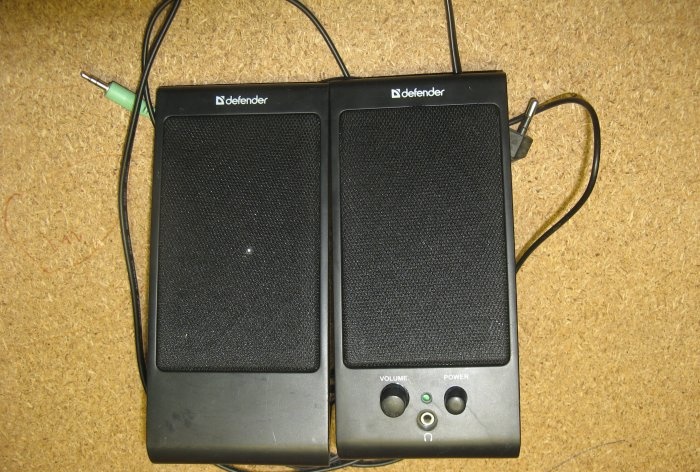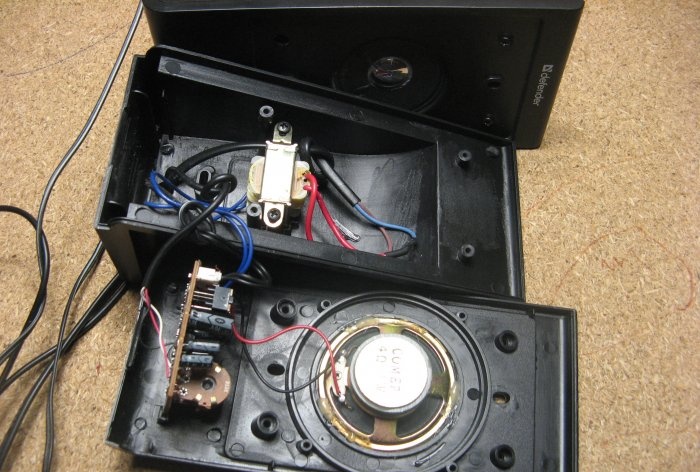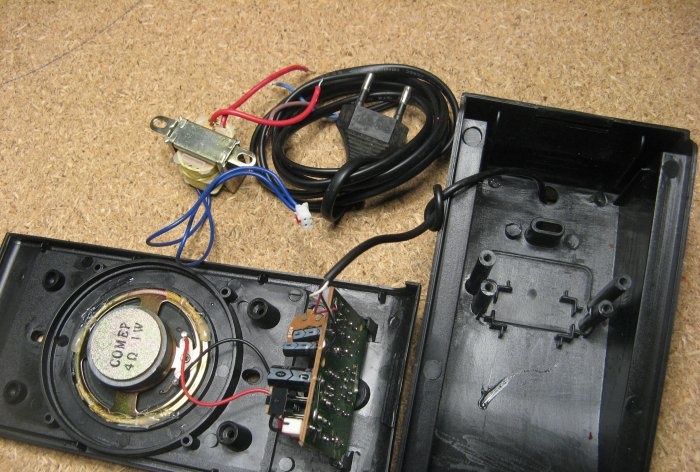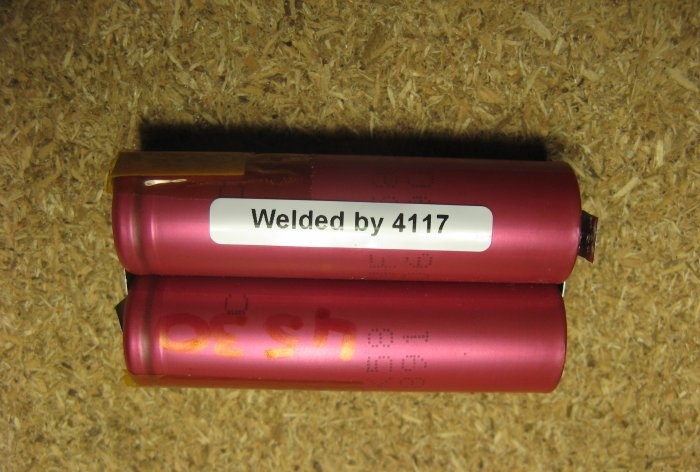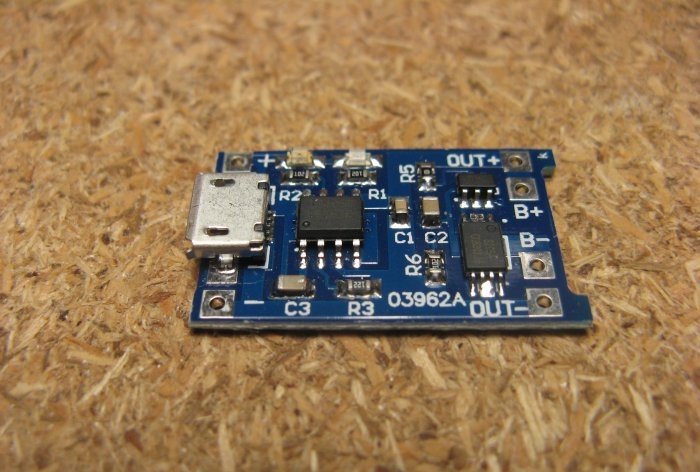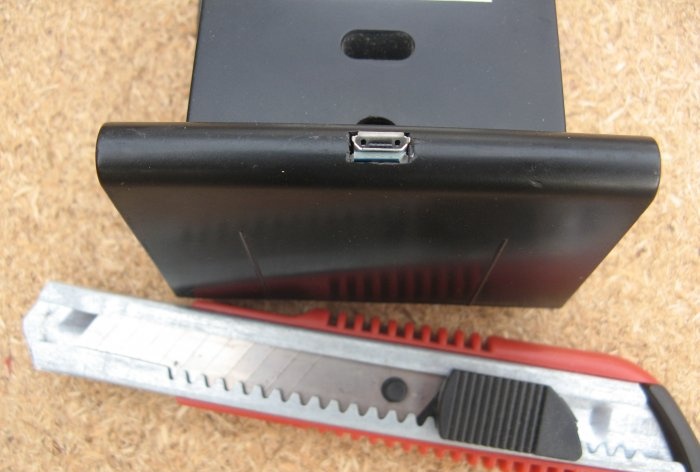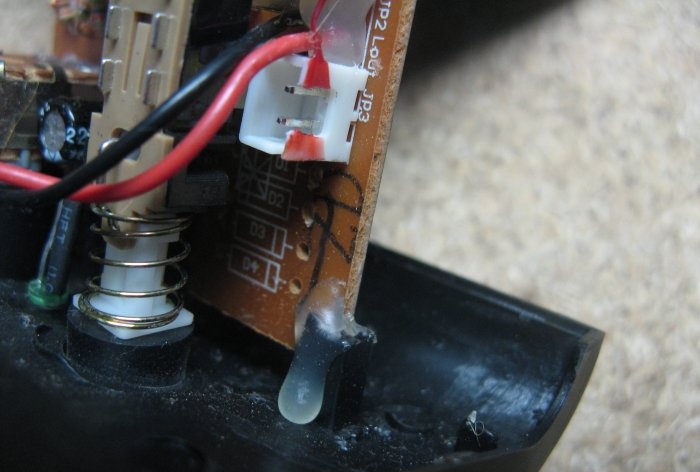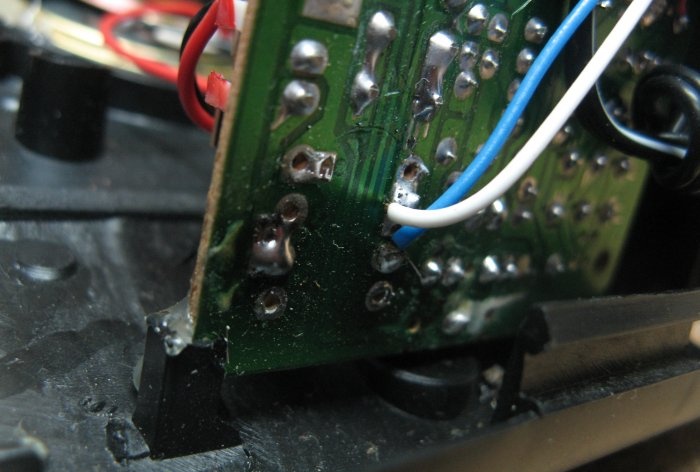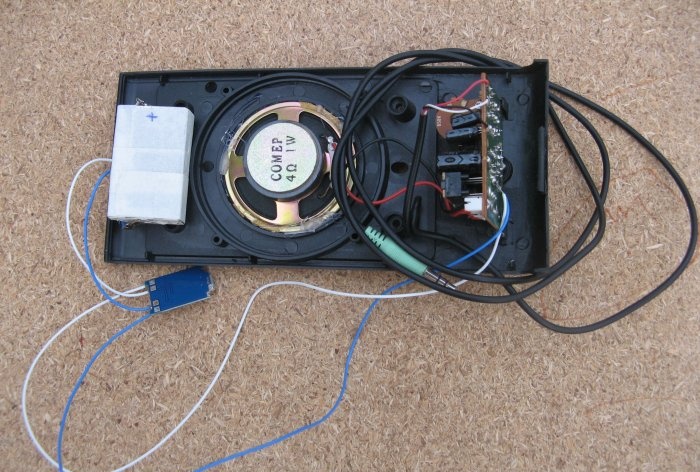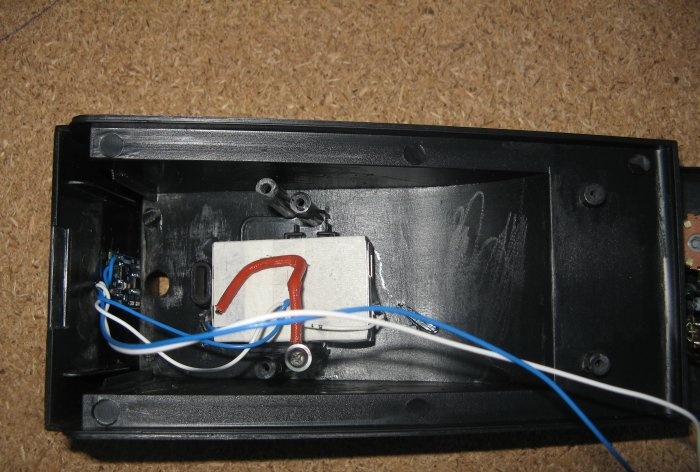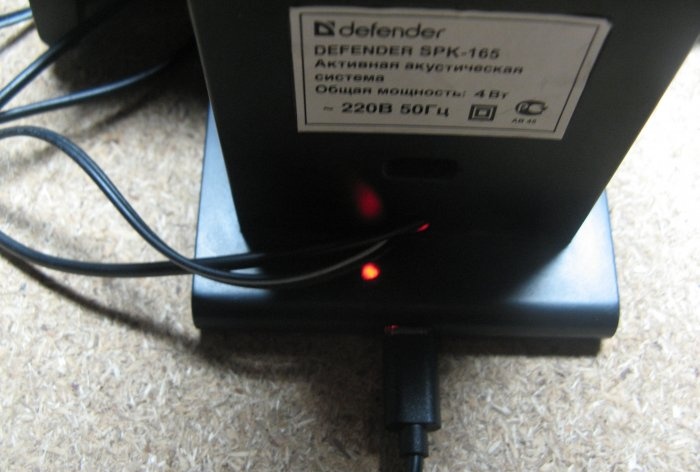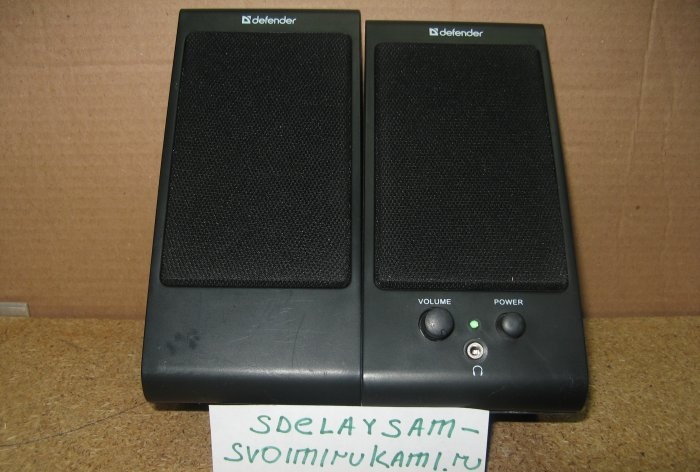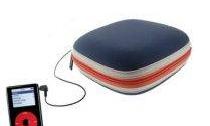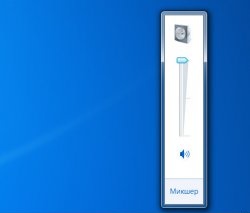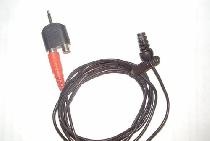Portable phone speakers
When you want to enhance the sound of your device, be it a phone or tablet. Turn the volume all the way up and the app drains the battery. But sometimes the volume is not enough. At home, if there is an outlet, speakers are used. Outside the home, a portable speaker can help solve the power problem, but their prices are quite high. I decided to remake cheap speakers. The cost of modification is low, and the result will satisfy many.
Accessories and tools:
The computer speakers Defender SPK-165 were taken as a basis. I bought them on a local forum for 100 rubles. The sound was, to put it mildly, terrible. We had a pair of 1 watt speakers available and installed them and they worked until this alteration.
Having disassembled we see the simplest configuration. Transformer and amplifier board with volume control and power off button. There will be a separate discussion about the button later.
Unsolder the mains transformer and power wire. We put them aside, they will no longer be useful to us.
Initially, I calculated power from two Lithium-ion batteries of the 18650 format. But due to the fact that the speakers in the speakers were changed to one-watt (they were half a watt and very quiet), I had to use Lithium-polymer flat batteries. I have them used, but the total capacity is more than enough.
Our batteries will be charged using a charge controller from China. The controller is equipped with deep discharge protection. The board is marked V-/B+; the battery is connected to them. OUT+/OUT-, the load is connected to them.
The charge controller is mounted in the sole. We cut out a window for the connector and file the board, the main thing is not to damage the tracks. The board is glued with double-sided tape; for reliability, you can also secure it with hot glue.
Since the speakers supplied mains power directly to the transformer, and from it to the diode bridge, we will redo this part. We solder all the diodes, 4 of them.
Power from the battery, or more precisely from the charge controller board, is soldered to the plus and minus of the diode bridge. Also, the power plus will be switched by the speaker switch.
First we solder our circuit with a canopy on the wires and check for functionality.
Flat batteries are secured with a simple brace made of copper wire with an insulating tube attached to it.
To control the charging process of the batteries, we make a hole in the sole opposite the LED indication of the charge controller and fill it with hot-melt adhesive. Cut off excess glue. We twist the speakers and connect the charger. Charges from any charger from a smartphone, tablet and micro USB output. The display is clearly visible.
That's how, and with almost no effort, we modified computer speakers with mains power to become portable speakers.Later I will add more batteries to increase the battery capacity.
Will need
Accessories and tools:
- - small-sized computer speakers;
- - li-ion battery;
- - charge controller on TP4056 with protection;
- - wires;
- - soldering iron, drill.
Making speakers for a smartphone
The computer speakers Defender SPK-165 were taken as a basis. I bought them on a local forum for 100 rubles. The sound was, to put it mildly, terrible. We had a pair of 1 watt speakers available and installed them and they worked until this alteration.
Having disassembled we see the simplest configuration. Transformer and amplifier board with volume control and power off button. There will be a separate discussion about the button later.
Unsolder the mains transformer and power wire. We put them aside, they will no longer be useful to us.
Initially, I calculated power from two Lithium-ion batteries of the 18650 format. But due to the fact that the speakers in the speakers were changed to one-watt (they were half a watt and very quiet), I had to use Lithium-polymer flat batteries. I have them used, but the total capacity is more than enough.
Our batteries will be charged using a charge controller from China. The controller is equipped with deep discharge protection. The board is marked V-/B+; the battery is connected to them. OUT+/OUT-, the load is connected to them.
The charge controller is mounted in the sole. We cut out a window for the connector and file the board, the main thing is not to damage the tracks. The board is glued with double-sided tape; for reliability, you can also secure it with hot glue.
Since the speakers supplied mains power directly to the transformer, and from it to the diode bridge, we will redo this part. We solder all the diodes, 4 of them.
Power from the battery, or more precisely from the charge controller board, is soldered to the plus and minus of the diode bridge. Also, the power plus will be switched by the speaker switch.
First we solder our circuit with a canopy on the wires and check for functionality.
Flat batteries are secured with a simple brace made of copper wire with an insulating tube attached to it.
To control the charging process of the batteries, we make a hole in the sole opposite the LED indication of the charge controller and fill it with hot-melt adhesive. Cut off excess glue. We twist the speakers and connect the charger. Charges from any charger from a smartphone, tablet and micro USB output. The display is clearly visible.
That's how, and with almost no effort, we modified computer speakers with mains power to become portable speakers.Later I will add more batteries to increase the battery capacity.
Watch the video
Similar master classes
Particularly interesting

Cable antenna for digital TV in 5 minutes
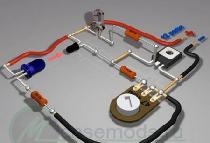
A selection of simple and effective schemes.
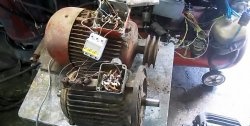
Three-phase voltage from single-phase in 5 minutes
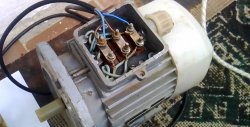
Starting a three-phase motor from a single-phase network without a capacitor

Eternal flashlight without batteries
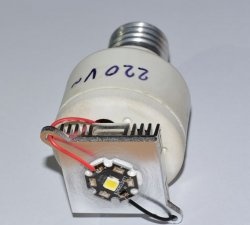
How to make an inexpensive but very powerful LED lamp
Comments (1)

